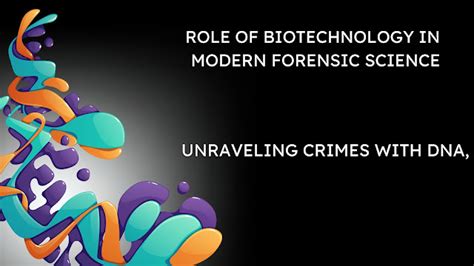Introduction

Forensic science criminology is a rapidly evolving field that combines the principles of science and the criminal justice system. It is a crucial tool for law enforcement, helping to solve crimes, convict criminals, and exonerate the innocent. This article will delve into the fascinating world of forensic science criminology, exploring its techniques, applications, and the profound impact it has on society.
Applications of Forensic Science in Criminology
Forensic science plays a multifaceted role in criminology, encompassing a wide range of applications:
1. Crime Scene Investigation:
- Physical Evidence Collection: Gathering and analyzing physical evidence, such as fingerprints, DNA, bloodstains, and fibers, to reconstruct the events of a crime.
- Trace Evidence Analysis: Identifying and examining microscopic traces, such as hairs, paint chips, and glass fragments, to link suspects to the scene.
2. Forensic Pathology:
- Autopsy Examinations: Performing autopsies to determine the cause and manner of death, providing crucial information for criminal investigations.
- Toxicology: Analyzing bodily fluids to detect the presence of drugs, toxins, or other substances relevant to a crime.
3. Forensic DNA Analysis:
- DNA Profiling: Identifying individuals based on their unique genetic profile, aiding in suspect identification and exoneration.
- Genetic Genealogy: Using DNA analysis to identify unknown suspects or relatives in cold cases.
4. Digital Forensics:
- Computer Crime Investigation: Examining electronic devices to recover digital evidence of criminal activity, such as hacking, fraud, and cyberbullying.
- Data Recovery: Retrieving deleted or damaged data from electronic devices, providing valuable insights into criminal activities.
5. Forensic Psychology:
- Criminal Profiling: Analyzing psychological traits and behaviors to create profiles of potential suspects or victims.
- Jury Selection: Using psychological principles to select jurors who are unbiased and capable of making fair decisions.
Benefits of Forensic Science in Criminology
Forensic science provides numerous benefits to the criminal justice system:
1. Accurate Crime Solving: By providing scientific evidence, forensic science helps to identify suspects, link them to crimes, and determine their motive and modus operandi.
– According to the National Institute of Justice, DNA evidence alone has exonerated over 375 wrongly convicted individuals in the United States.
– The FBI’s Integrated Automated Fingerprint Identification System (IAFIS) allows for lightning-fast fingerprint identification, contributing to the arrest of over 1.8 million suspects annually.
2. Prevention of Miscarriages of Justice: Forensic science helps to prevent innocent individuals from being wrongfully accused and convicted.
– The Innocence Project has exonerated over 360 wrongly convicted individuals through DNA testing, highlighting the importance of forensic evidence in ensuring a fair and just criminal justice system.
3. Improved Prosecution and Defense: Forensic science provides both prosecutors and defense attorneys with valuable evidence to support their cases, ensuring a more efficient and effective adversarial process.
– A study by the National Center for State Courts found that DNA evidence significantly increases the likelihood of guilty pleas and decreases the time spent in court.
Pain Points and Motivations
Despite its many benefits, forensic science also faces challenges and pain points:
1. Cost and Complexity: Forensic science techniques can be expensive and time-consuming, particularly for complex cases requiring specialized expertise and equipment.
2. Interpretation Bias: Forensic scientists are human and subject to biases that can influence their interpretation of evidence.
3. Rapid Technological Advancements: The rapid pace of technological advancements in forensic science creates challenges in keeping up with the latest techniques and equipment.
These pain points motivate ongoing research and development in forensic science, aimed at improving accuracy, reducing costs, and eliminating biases.
Emerging Trends and New Applications
The future of forensic science criminology holds exciting possibilities and emerging trends:
1. Forensic Data Mining: Using data mining techniques to sift through massive amounts of data, uncovering hidden patterns and connections that aid in crime solving.
2. Trace Evidence Enhancement: Developing new techniques to enhance the visibility and analysis of trace evidence, such as laser-based methods and chemical enhancements.
3. Miniaturized Instrumentation: Creating portable and miniaturized forensic instruments for on-site evidence analysis, reducing time and contamination risks.
4. Artificial Intelligence in Forensics: Employing AI algorithms to automate tasks, such as image analysis, data clustering, and suspect identification, enhancing efficiency and objectivity.
5. Forensic Linguistics: Using linguistic analysis to identify and compare written and spoken language, providing insights into authorship, deception, and intent.
Conclusion: The Vital Role of Forensic Science in Criminology
Forensic science criminology is an essential tool that has revolutionized the criminal justice system. By combining scientific principles and criminal investigation, forensic scientists provide invaluable evidence that helps to solve crimes, convict the guilty, and exonerate the innocent. As technology continues to advance and new techniques emerge, the field of forensic science criminology will undoubtedly continue to play a vital role in ensuring a fair and just society.
